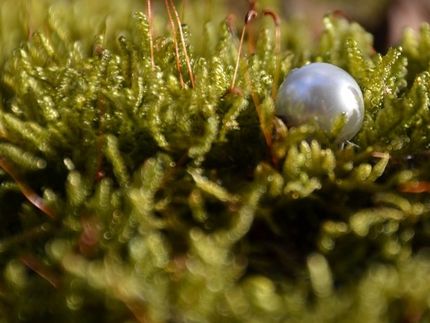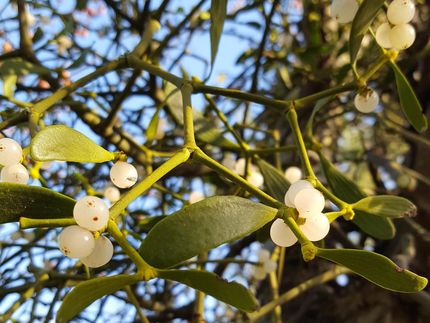Taking a cue from spider glue to create new materials
A taut tug on the line signals the arrival of dinner, and the leggy spider dashes across the web to find a tasty squirming insect. The spider, known as an orb weaver, must perfectly execute this moment, from a lightning-fast reaction to an artfully spun web glistening with sticky glue.

Brent Opell, a professor of biological sciences in the College of Science and a Fralin Life Science Institute affiliate, collects a portion of a spider web.
Lindsay Key
This glue - created when glycoproteins are secreted from a spider's abdomen and interact with the atmosphere - has been studied for the past 12 years by Brent Opell, a professor of biological sciences in the College of Science and a Fralin Life Science Institute affiliate.
Material scientists are interested in mimicking this glue for human products, and rely on biologists to determine factors involved in its creation, as well as its capabilities and limitations.
Opell's research team, which included Sarah Stellwagen, a 2015 biological sciences doctoral graduate, and Mary Clouse of Fairfax Station, Virginia, a senior majoring in biological sciences, recently determined that ultraviolet rays, specifically UVB rays, are an important environmental factor in the performance of spider glue.
They tested the webs of five local spider species - three that catch prey in broad daylight, and two that hunt at night or in deep forest shade shaded areas.
They found that the webs of sun-soaked spiders were far more resistant to UVB rays than the webs of those that hunt in the dark or shade, perhaps indicating an important adaptive trait.
"Our study adds UVB irradiation to the list of factors known to affect the performance of spider glycoprotein glue, which includes humidity, temperature, and strain rate," Opell said. "It is important to more fully understand these effects as material science moves toward producing environmentally non-toxic and energy conservative adhesives inspired by spider thread glycoprotein."
"The work by Opell's research team provides insight on a novel approach used by spiders to withstand UVB light," said Ali Dhinojwala, H.A. Morton Professor in Polymer Science at the University of Akron. "Currently, we add UV stabilizers to prevent degradation of polymers that are exposed to UVB light. Inspired by this study we can learn from the chemistry of spider glue to design new molecules to improve resistance to UVB light."
Original publication
Other news from the department science

Get the life science industry in your inbox
By submitting this form you agree that LUMITOS AG will send you the newsletter(s) selected above by email. Your data will not be passed on to third parties. Your data will be stored and processed in accordance with our data protection regulations. LUMITOS may contact you by email for the purpose of advertising or market and opinion surveys. You can revoke your consent at any time without giving reasons to LUMITOS AG, Ernst-Augustin-Str. 2, 12489 Berlin, Germany or by e-mail at revoke@lumitos.com with effect for the future. In addition, each email contains a link to unsubscribe from the corresponding newsletter.






















































